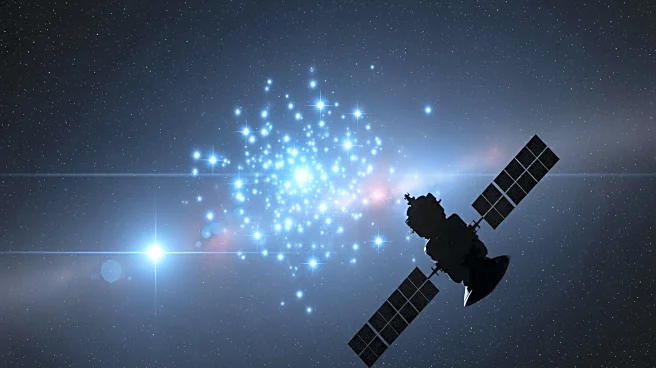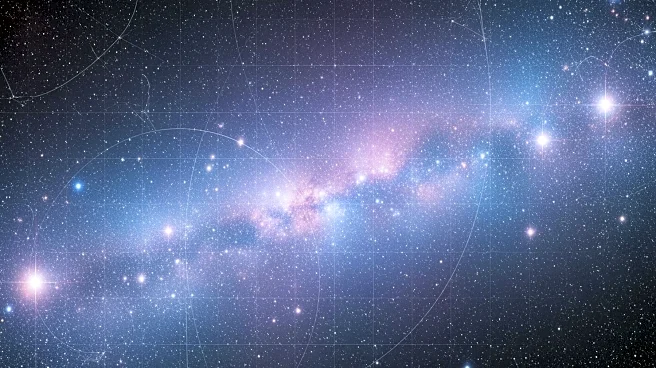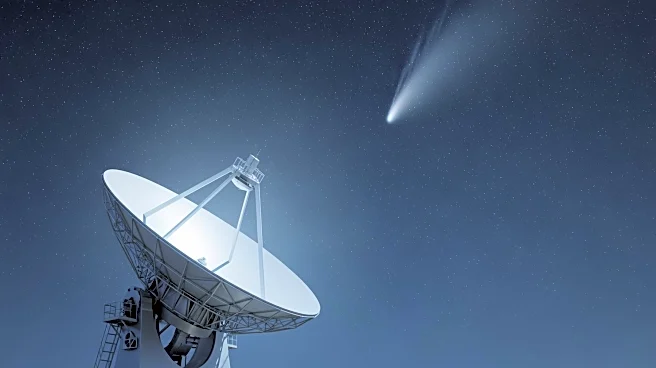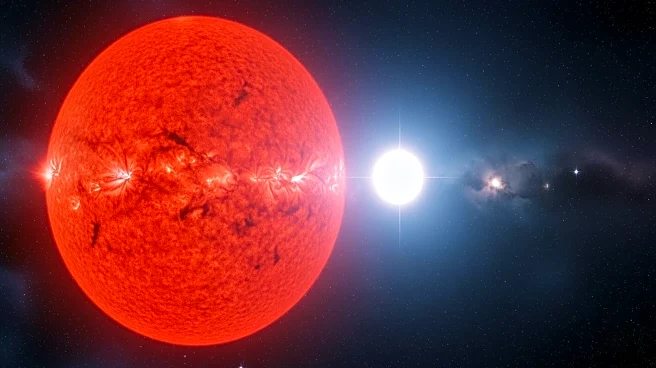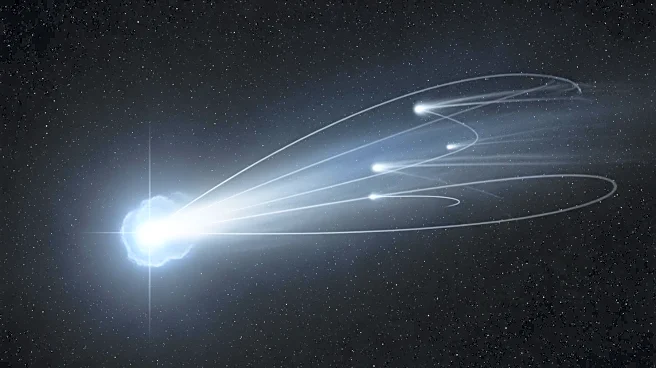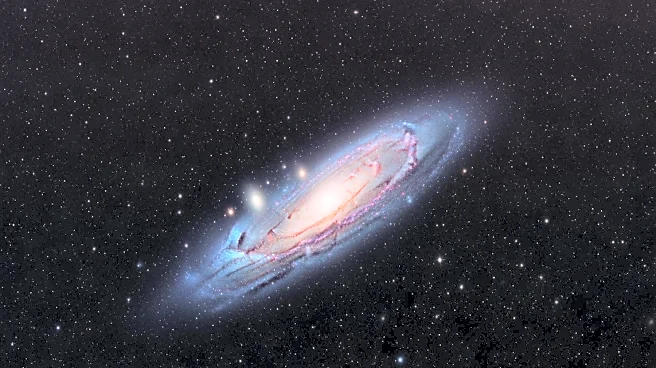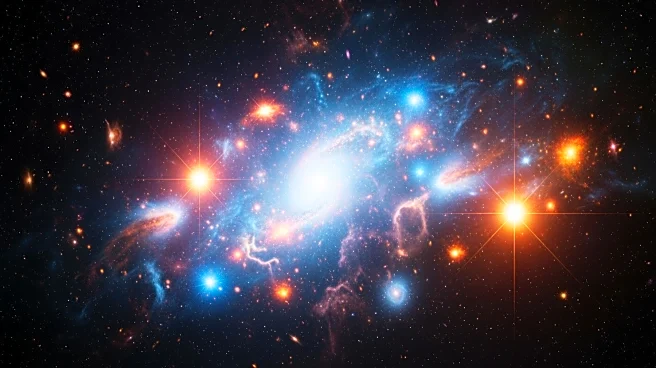What's Happening?
Astronomers have discovered the origins of a mysterious glowing ring of gas and dust, known as the 'Diamond Ring', located in the constellation Cygnus. The ring, which spans 20 light-years, was initially
thought to be adorned by a cluster of young stars. However, new observations and 3D simulations led by Simon Dannhauer from the University of Cologne reveal that the ring is the flattened remains of an expanding stellar bubble. This bubble was inflated by the radiation and winds of a massive young star, which eventually burst, leaving behind the ring. The study suggests the ring is much younger than previously estimated, with an age of 400,000 to 500,000 years, compared to earlier estimates of several million years.
Why It's Important?
The findings provide significant insights into the formation of stars within the Milky Way. The study challenges the traditional models that assume star formation occurs within spherical gas clouds, suggesting that slab-like environments may be more common. Understanding these processes is crucial for astronomers as they refine models of stellar evolution and the dynamics of interstellar matter. The research also highlights the importance of advanced simulations and observations in uncovering the complexities of cosmic structures.


